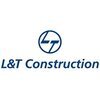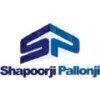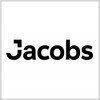Filter interviews by
Technip Energies Interview Questions and Answers
63 Interview questions
A pipe rack is a structure used to support pipes and other equipment in a plant or industrial facility.
Pipe racks are typically made of steel and are designed to withstand the weight of the pipes and equipment they support.
They are used to organize and route pipes throughout a facility, allowing for easy access and maintenance.
Pipe racks can be located indoors or outdoors, and can be designed to accommodate a vari...
Headroom clearance is the vertical distance between the highest point of a piping system and the ceiling or any obstruction above it.
Headroom clearance is important to ensure safe and efficient installation and maintenance of piping systems.
It is typically specified in building codes and industry standards.
The required headroom clearance may vary depending on the type of piping system and its location.
For example,...
Battery sizing calculation involves determining the capacity and voltage required for a specific application.
Determine the power requirements of the application
Calculate the energy required by multiplying power and time
Select a battery with sufficient capacity and voltage to meet energy requirements
Consider factors such as temperature, discharge rate, and cycle life
Perform testing and validation to ensure the sele...
A heat exchanger is a device used to transfer heat between two or more fluids.
Heat exchangers are used in various industries such as chemical, power, and HVAC.
They work by allowing two fluids to flow through separate channels, with heat transferring from one fluid to the other.
Common types of heat exchangers include shell and tube, plate and frame, and finned tube.
Heat exchangers can be used for heating, cooling, ...
Distillation is a process of separating components of a mixture based on their boiling points.
It involves heating the mixture to vaporize the component with the lowest boiling point.
The vapor is then condensed and collected as a separate liquid.
This process can be used to purify liquids, separate different components of a mixture, and extract essential oils from plants.
Examples include the distillation of crude oi...
Designing an exchanger involves determining the heat transfer area, fluid flow rates, and selecting appropriate materials.
Determine the heat transfer area required based on the heat duty and the overall heat transfer coefficient.
Calculate the fluid flow rates and pressure drops for both the hot and cold fluids.
Select appropriate materials based on the process conditions and compatibility with the fluids.
Consider f...
Final OPOT of a column can be achieved through proper planning and execution.
Ensure proper alignment and positioning of the column
Check for any defects or damages in the column
Ensure proper reinforcement and formwork
Pour concrete in stages and compact it properly
Allow sufficient time for curing
Perform necessary tests and inspections before finalizing OPOT
Quality can be achieved by implementing a comprehensive quality management system and continuously improving processes.
Establishing clear quality objectives and metrics
Implementing quality control measures
Conducting regular audits and inspections
Providing training and development opportunities for employees
Encouraging a culture of continuous improvement
Using customer feedback to drive improvements
Ensuring complian...
Broaching is a machining process used for shaping a surface by removing material with a toothed tool.
Broaching is a metal cutting process that uses a toothed tool called a broach to remove material from a workpiece.
It is used for shaping internal or external surfaces, such as keyways, splines, and gears.
Broaching can be used as a finishing process to achieve tight tolerances and smooth surface finishes.
It can also...
There are two main types of IC engines: spark ignition (SI) engines and compression ignition (CI) engines.
Spark ignition (SI) engines use a spark plug to ignite the fuel-air mixture, commonly used in gasoline engines.
Compression ignition (CI) engines rely on the heat generated by compressing the air-fuel mixture to ignite it, commonly used in diesel engines.
Other types include rotary engines, two-stroke engines, a...
Technip Energies Interview Experiences
79 interviews found
It's ok the question are asked from the basis
(2 Questions)
- Q1. What is the need of earth wiring
- Ans.
Earth wiring is needed to provide a path for fault currents to safely dissipate into the ground.
Ensures safety by preventing electric shocks and fires
Protects electrical equipment from damage
Meets regulatory requirements for grounding systems
Provides a reference point for voltage levels
Examples: grounding rods, grounding conductors
- Q2. To eliminate and drop the sudden fault current in the system
(1 Question)
- Q1. He just asked about the basis questions
I applied via Campus Placement and was interviewed in Sep 2024. There were 3 interview rounds.
This test was related to Aptitude as per AMCAT syllabus involves Aptitude, English, Personality, Core branch questions
(2 Questions)
- Q1. Explain Transformer circuit diagram, losses
- Ans.
Transformer circuit diagram consists of primary and secondary coils connected by a magnetic core. Losses include core losses and copper losses.
Transformer circuit diagram includes primary and secondary coils connected by a magnetic core
Losses in a transformer include core losses (eddy current and hysteresis losses) and copper losses (due to resistance in windings)
Efficiency of a transformer is affected by these losses
- Q2. Compare losses of transformer with Induction motor
- Ans.
Transformers have lower losses compared to induction motors due to their simpler design and operation.
Transformers have core losses (eddy current and hysteresis losses) and copper losses (due to resistance in windings).
Induction motors have similar losses but also include mechanical losses (friction and windage losses).
Efficiency of transformers is typically higher than induction motors due to lower losses.
Losses in tr...
(2 Questions)
- Q1. Introduce yourself
- Ans.
I am a recent graduate with a degree in engineering, passionate about problem-solving and eager to learn and grow in the field.
Recent graduate with a degree in engineering
Passionate about problem-solving
Eager to learn and grow in the field
- Q2. What you know about company?
- Ans.
Company is a leading engineering firm specializing in renewable energy projects.
Company focuses on renewable energy projects
Known for innovative engineering solutions
Has a strong track record of successful projects
Offers opportunities for growth and development
Has a diverse and talented team of engineers
Interview Preparation Tips
Try to practice your core branch questions mine is Electrical so questions from electrical machines, power system and digital were asked in the mcq based test.
I appeared for an interview in Apr 2025, where I was asked the following questions.
- Q1. Can you describe the professional challenges you have faced in your career and the strategies you employed to overcome or improve them?
- Ans.
Throughout my career, I've faced various challenges, including project delays and team dynamics, which I overcame with strategic planning.
Project Delays: I encountered significant delays in a construction project due to unforeseen weather conditions. I implemented a revised schedule and prioritized critical tasks to get back on track.
Team Dynamics: In a previous role, I faced challenges with team communication. I organ...
- Q2. How can you improve and implement the Health, Safety, and Environment (HSE) management system that you have selected?
- Ans.
Improving HSE management systems involves enhancing policies, training, and communication to ensure a safer work environment.
Conduct Regular Audits: Implement frequent audits to identify hazards and ensure compliance with HSE regulations, such as monthly safety inspections.
Enhance Training Programs: Develop comprehensive training sessions for employees on safety protocols, emergency response, and equipment handling, li...
Interview Preparation Tips
I applied via Campus Placement and was interviewed in May 2024. There were 4 interview rounds.
Normal apti questions and also basic technical question were there with some behavorial questions too it is of 1.5 hours
Thoughts on animal cruelty how you see them
(5 Questions)
- Q1. What is heat exchangers
- Ans.
Heat exchangers are devices used to transfer heat between two or more fluids, without them mixing together.
Heat exchangers are commonly used in industrial processes, HVAC systems, and refrigeration systems.
They work by transferring heat from one fluid to another through a solid wall, without the fluids coming into direct contact.
Examples of heat exchangers include shell and tube, plate, and finned tube heat exchangers.
- Q2. Explain shell and tube heat exchanger
- Ans.
Shell and tube heat exchanger is a type of heat exchanger that uses multiple tubes enclosed in a shell to transfer heat between two fluids.
Consists of a shell (outer vessel) and tubes (inner vessels)
One fluid flows through the tubes while the other flows around the tubes in the shell
Heat is transferred from one fluid to the other through the tube walls
Commonly used in industrial processes, HVAC systems, and refrigerati...
- Q3. Explain npsh in pump
- Ans.
NPSH stands for Net Positive Suction Head and is a measure of the pressure available at the suction port of a pump.
NPSH is important for ensuring that a pump does not cavitate, which can damage the pump and reduce efficiency.
It is calculated by subtracting the vapor pressure of the liquid being pumped from the total suction head of the pump.
NPSH is typically provided by the pump manufacturer and must be greater than th...
- Q4. What is radiation
- Ans.
Radiation is the emission of energy as electromagnetic waves or as moving subatomic particles, especially high-energy particles that cause ionization.
Radiation can be classified into ionizing radiation (e.g. gamma rays, X-rays) and non-ionizing radiation (e.g. visible light, radio waves)
Ionizing radiation has enough energy to remove tightly bound electrons from atoms, creating ions
Radiation is used in various fields su...
- Q5. Formula of friction factor
- Ans.
Friction factor is a dimensionless quantity used in fluid mechanics to describe the amount of friction between a fluid and a surface.
Friction factor is denoted by the symbol 'f'.
It is commonly used in the Darcy-Weisbach equation to calculate pressure drop in pipes.
The formula for friction factor varies depending on the flow regime, such as laminar or turbulent flow.
For laminar flow, the formula for friction factor is 6...
(2 Questions)
- Q1. What is you family background
- Q2. Tell me about something where you had applied your team work and leadership skills
Interview Preparation Tips
I applied via Campus Placement and was interviewed in Aug 2024. There were 4 interview rounds.
Online mode, it includes technical questions, aptitude, verbal questions
They give general topic and gave 5 min to prepare and we need to present about the topic
(2 Questions)
- Q1. Types of controller
- Ans.
Types of controllers include PID, PLC, and DCS.
PID controller: used in industrial control systems to regulate processes based on feedback
PLC (Programmable Logic Controller): used in automation to control machinery and processes
DCS (Distributed Control System): used in large industrial processes to control multiple systems from a central location
- Q2. Different types of flow meters
- Ans.
Flow meters are devices used to measure the flow rate of a fluid in a pipe or conduit.
Differential pressure flow meters (e.g. Orifice plate, Venturi tube)
Velocity flow meters (e.g. Turbine, Electromagnetic)
Positive displacement flow meters (e.g. Piston, Oval gear)
Mass flow meters (e.g. Coriolis, Thermal)
(1 Question)
- Q1. Are you ready to relocate
- Ans.
Yes, I am open to relocating for the right opportunity.
I am willing to relocate for the Engineer Trainee position.
I understand that relocation may be necessary for career growth.
I am excited about the possibility of experiencing a new location and culture.
I am flexible and adaptable to new environments.
Basic aptitute questions were asked. and techical from som and thermal related subs
(2 Questions)
- Q1. Stress strain curve
- Q2. Iron carbon diagram
- Ans.
Iron carbon diagram is a graphical representation of the phases of iron and carbon at different temperatures.
Shows the phases of iron and carbon at different temperatures
Includes regions for austenite, ferrite, cementite, and pearlite
Helps in understanding the microstructure of steel
(1 Question)
- Q1. Pump Hydraulics, Pump Curve
I appeared for an interview in Mar 2025, where I was asked the following questions.
- Q1. Piping engineer
- Q2. Structur fabrication and erection
- Q3. All oil and gas industry refinery
(2 Questions)
- Q1. My experience in petrochemical
- Ans.
I have over 10 years of experience in the petrochemical industry, working on various projects and processes.
Managed process optimization projects to improve efficiency and reduce costs
Developed and implemented new processes for product development
Troubleshooted and resolved issues in production processes
Collaborated with cross-functional teams to ensure project success
- Q2. Example where i did something to save energy
- Ans.
Implemented energy-efficient lighting system in manufacturing plant
Conducted energy audit to identify areas for improvement
Replaced traditional lighting with LED fixtures
Installed motion sensors to automatically turn off lights in unoccupied areas
I applied via Campus Placement
60mins,logical analytical
Technical topic subject in instrumentation, mechanical, electrical and electronics
(1 Question)
- Q1. Core subjects like instrumentation
(1 Question)
- Q1. Personal details
Interview Preparation Tips
Top trending discussions






Technip Energies Interview FAQs
The duration of Technip Energies interview process can vary, but typically it takes about less than 2 weeks to complete.
Tell us how to improve this page.
Technip Energies Interviews By Designations
- Technip Energies Graduate Engineer Trainee (Get) Interview Questions
- Technip Energies Engineer Trainee Interview Questions
- Technip Energies Electrical Engineer Interview Questions
- Technip Energies Graduate Engineer Interview Questions
- Technip Energies Process Engineer Interview Questions
- Technip Energies Graduate Trainee Interview Questions
- Technip Energies Document Controller Interview Questions
- Technip Energies Senior Engineer Interview Questions
- Show more
Interview Questions for Popular Designations
Overall Interview Experience Rating
based on 84 interview experiences
Difficulty level
Duration
Interview Questions from Similar Companies
Technip Energies Reviews and Ratings
based on 746 reviews
Rating in categories
|
Senior Engineer
151
salaries
| ₹11.5 L/yr - ₹20 L/yr |
|
Piping Designer
130
salaries
| ₹6.1 L/yr - ₹13.5 L/yr |
|
Process Engineer
124
salaries
| ₹8 L/yr - ₹13 L/yr |
|
Senior Principal Engineer
108
salaries
| ₹20.5 L/yr - ₹38 L/yr |
|
Deputy Manager
107
salaries
| ₹11 L/yr - ₹19 L/yr |

L&T Construction

Shapoorji Pallonji Group

Saint-Gobain

AECOM
- Home >
- Interviews >
- Technip Energies Interview Questions













